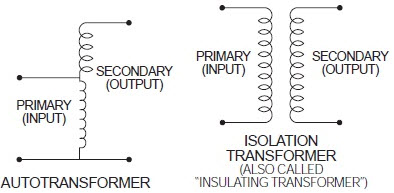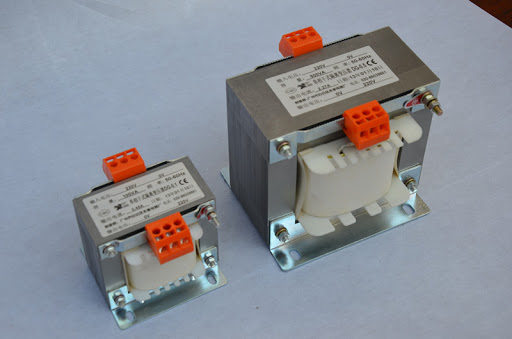An isolation transformer is an electrical transformer with a primary and secondary coil winding. These windings are separated by insulation. This insulation limits the risk of electrocution when the active parts and earth are touched simultaneously.
An autotransformer is an electrical transformer with only one winding. The term “auto” refers to single-coil acting alone and not to any automatic mechanism. In an autotransformer, portions of the same winding act as both the primary and secondary sides of the transformer.

| Compare | Autotransformer | Isolation/Insulating Transformer |
|---|---|---|
| Advantages | – Better power quality – Noise reduction – Reduces surges – Safety | – Cheap and more efficient – Less leakage inductance between primary and secondary – Simple construction – Smaller footprint for same VA rating |
| Operation | The primary purpose of an autotransformer is to regulate the voltage of transmission lines and can be used to transform voltages. With only one winding, an autotransformer adjusts the voltage automatically according to load. These transformers call for AC currents to operate correctly and will not function on direct current. | The primary purpose of an isolation transformer is to isolate circuits. These transformers are designed and manufactured with attention to capacitive coupling between the two windings. The capacitance between primary and secondary windings would also couple alternating current (AC) current from the primary to the secondary. |
| Applications | – Boost at the end of a long transmission line to compensate for line losses – Reduced starter voltage for an induction motor – To enable rectifier output control, multi-tap feeding the primary – Fluorescent light fixture start-up | – Computers and peripherals – Medical Equipment – Remote control equipment – Telecommunication equipment |
Contact Shreejee Electronics today to evaluate your specific transformer needs, whether it is an isolation transformer or an autotransformer.
